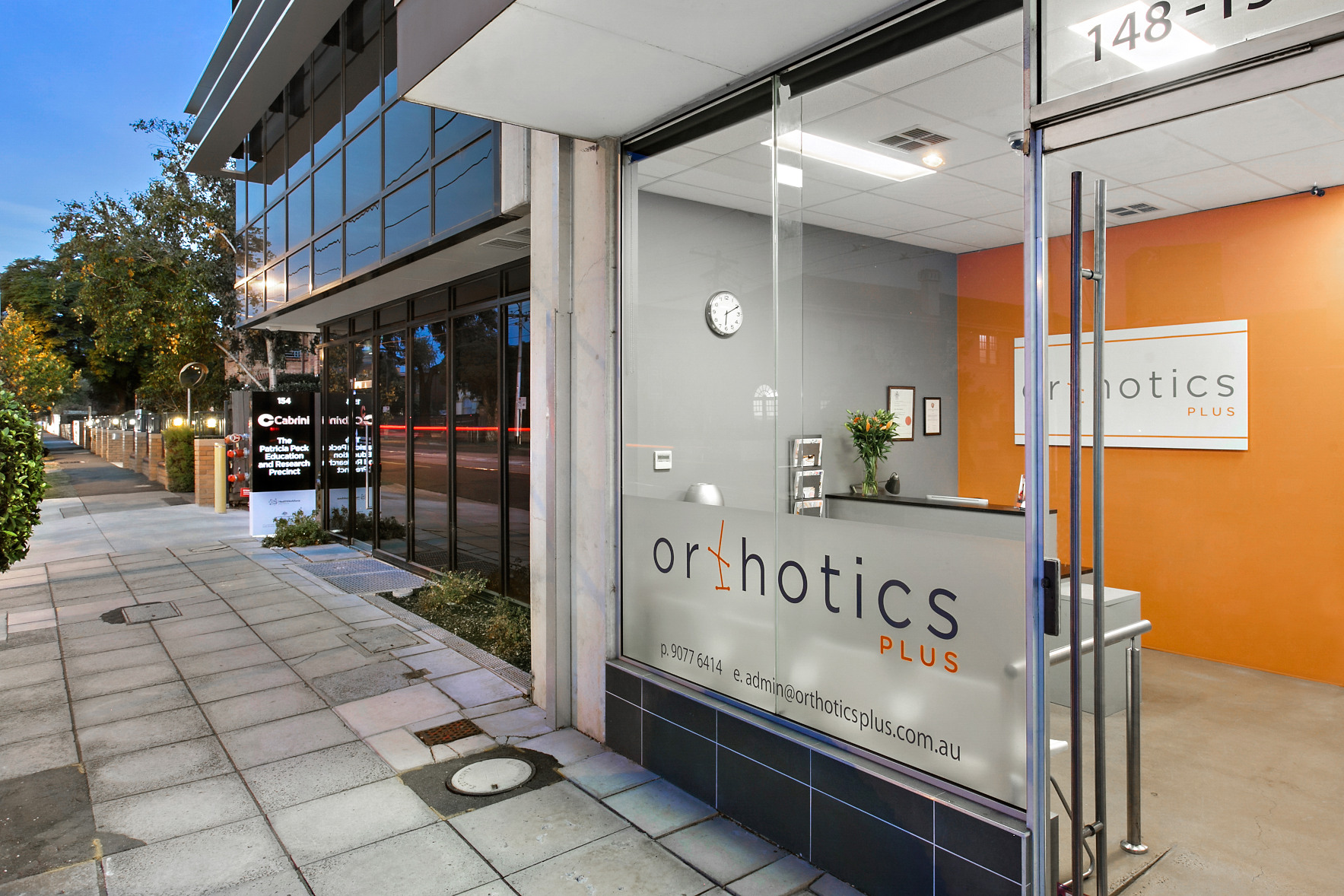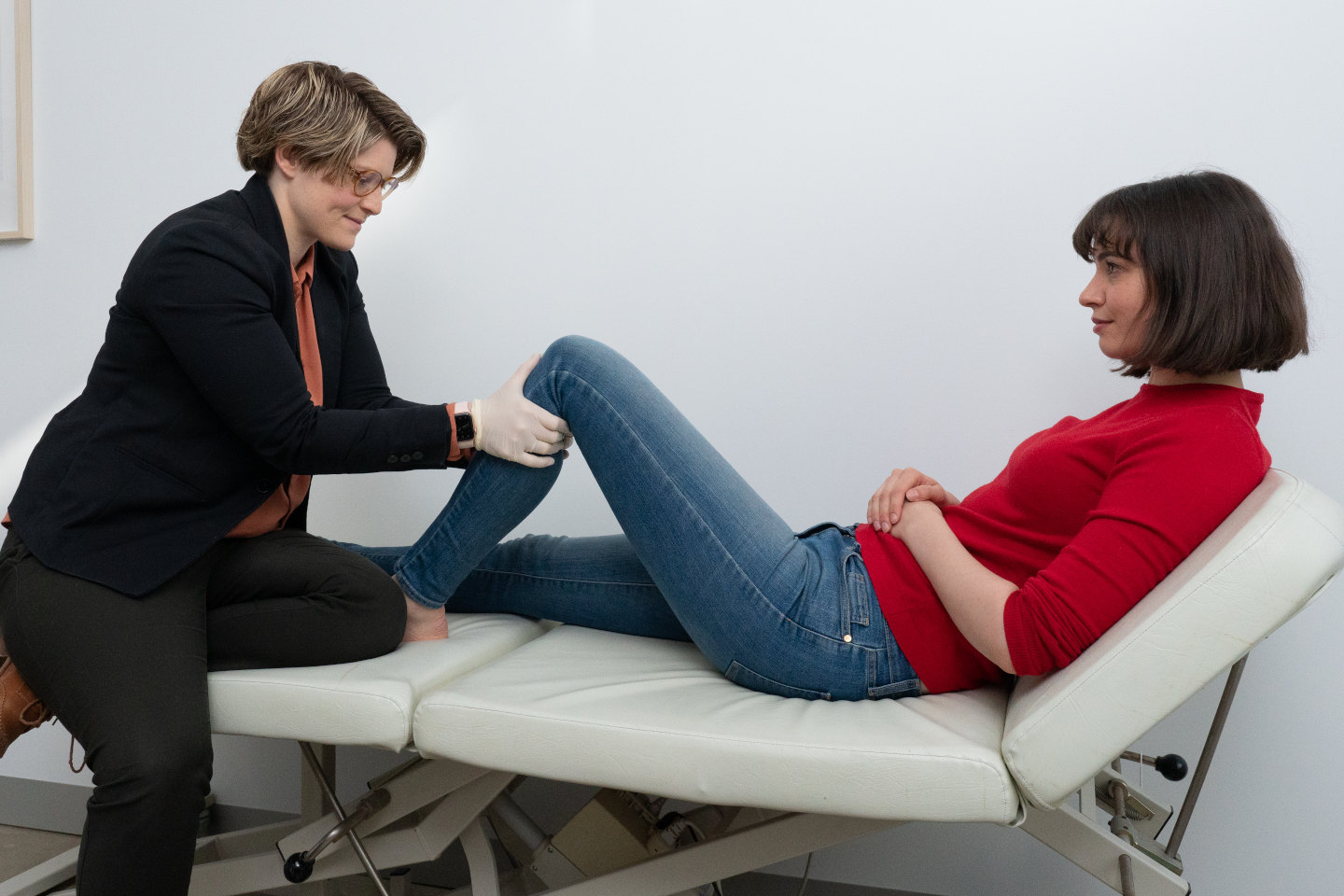Orthotics Plus is able to assist implementation of ACL bracing and assist medical professionals who choose to implement the cross-bracing protocol for appropriate patients.
Introduction to the Cross-Bracing ACL Protocol
Historically, the common belief was that if you rupture your ACL (anterior cruciate ligament), surgery was necessary to regain function. For athletes, especially at the higher levels, a ruptured ACL often meant undergoing ACL reconstruction surgery to return to the same level of performance.

However, recent findings (link:Healing of acute anterior cruciate ligament rupture on MRI and outcomes following non-surgical management with the Cross Bracing Protocol | British Journal of Sports Medicine) indicate that for specific patients with a specific style of ACL rupture there’s an alternative approach which can lead to ACL healing via the Cross Bracing Protocol.
The Cross Bracing Protocol involves immobilising the leg at 90 degrees for four weeks and then gradually increasing the range of motion via a specific schedule until full extension is reached and the brace can be removed. This approach has shown ACL healing in 90% of cases and shown many promising results. Making surgery not the only option for achieving a functional ACL.
According to the protocol, it’s crucial to maintain a non-weight-bearing status for 6 weeks. This means using crutches or a knee scooter for well over a month to avoid loading the affected leg.
Moreover, it is essential to be under the supervision of a doctor, sports medicine specialist, or surgeon to conduct the appropriate imaging, classify the injury correctly, educate the patient on the risks and benefit and to provide medications to reduce the risk of deep vein thrombosis (DVT) since the leg is immobilised for an extended period. To mitigate the risk of blood clots, patients are typically prescribed blood thinners.
At Orthotics Plus we can assist with the bracing and immobilisation aspect of the protocol, helping patients to comply with this protocol using the most suitable and comfortable brace for their requirements.
The Perspective of Orthotics Plus
From the Orthotic perspective, this protocol presents some challenges. Patients may experience pressure-related issues and compliance difficulties in consistently wearing and managing a brace.

Therefore, it’s crucial to have someone with expertise in fitting and maintaining the brace to ensure comfort and proper positioning throughout the treatment. Orthotics Plus can provide valuable assistance in this aspect.
As a sports medicine doctor, orthopedic surgeon, or physiotherapist considering this protocol, you can refer patients to Orthotics Plus for expert bracing services. We can fit your patient with the most comfortable and effective braces, manage their comfort and compliance, and appropriately adjust the range of motion over the 12-week period as required.
Advantages of the Cross Bracing Protocol
It’s important to note that the advantages of the cross bracing protocol are in the early stages of research.
However, there are potential benefits worth considering. One significant advantage is that it eliminates the need for traditional ACL surgery, which involves taking parts of the hamstring or quadriceps tendon. Surgery always carries some degree of risk, even if ACL surgeries generally have low risk.
Furthermore, there is speculation that natural healing of the ACL through this protocol may lead to a more native and natural ligament, providing better proprioceptive feedback to the body. This is currently purely hypothetical.
We believe it’s essential to remain cautious as the protocol is still in its early stages, and its potential long-term effects and drawbacks need further investigation, however the benefits and patient outcomes based on the early research are currently very positive.
Understanding the Treatment Process
As mentioned it is essential to be under the supervision of a doctor, sports medicine specialist, or surgeon to conduct the appropriate imaging, classify the injury correctly, educate the patient on the risks and benefits and to provide medications to reduce the risk of deep vein thrombosis (DVT) since the leg is immobilised for an extended period. To mitigate the risk of blood clots, patients are typically prescribed blood thinners. Simply locking a leg at 90 degrees for 4 weeks is not following the CBP.
For optimal results, it is crucial to initiate the Cross Bracing Protocol ASAP following an ACL injury. The original study had patients begin treatment within 4 weeks and preferably sooner. Delaying the treatment may decrease the likelihood of success.
The average age of the participants in the original study was 26. Its success on older patients is yet to be extensively explored.
Several braces are suitable for use in the Cross Bracing Protocol, but the choice may depend on cost, patient anatomy and the use of a knee scooter and other considerations. We believe that at Orthotics Plus we are well situated to present the patient with the best options and assist with the ongoing orthotic management of the protocol.
Bracing for the Cross Bracing ACL Rehabilitation
It is essential to carefully select braces with the appropriate range of motion capability, as locking the knee at 90 degrees is a rare requirement, typically only found in post-surgical braces. Therefore, finding braces with this specific ability might be more challenging, as most braces are not designed for such an application.
Orthotics Plus stocks the braces which can be considered for Cross bracing ACL rehabilitation.
Side Effects of Extensive Immobilisation
The protocol can be attempted for a period of a few weeks to a few months. If an MRI shows that the ACL is not healing during this period, it does not preclude the possibility of surgery later; both options can be explored. However, there is a risk of muscle loss and knee contracture when the knee is bent for prolonged periods. Despite some patients experiencing contractures during the study, these issues were successfully addressed through physiotherapy over time.
Some patients despite achieving ACL healing do end up with a lax ACL and reduced knee function, however reduced knee function is an established side effect of ACL injury with or without surgery.
Follow Up Measures and Assessing the Outcome of ACL Rehabilitation
The outcome assessment involves conducting an MRI to assess the status of the ACL, determining if it has healed and remains a continuous ligament.
Physical testing is also performed to evaluate knee stability and patient feedback on the knee’s perceived stability. Various standardised outcome measures, including hopping, walking, and specific ACL tests, are utilised to gauge progress.
In the study, 90% of participants showed healing but 50% healed with a slightly longer and thinner ligament, referred to as an attenuated ligament. The long-term changes of this attenuated ligament are uncertain.
Future adjustments to the protocol might be necessary, potentially involving prolonged maintenance of the 90-degree knee position or employing dynamic braces after four weeks to prevent ligament attenuation. The attenuated ACLs might mature and thicken over time with appropriate loading too.
Currently, the Cross Bracing Protocol is in its early stages and is likely to undergo refinement in the future. Patients who opt for this approach at present can be considered early adopters. However, the protocol must be implemented by experienced professionals trained in its application, working under the supervision of orthopedic surgeons or sports medicine doctors.

Do You Require a Knee Assessment? Contact Us Today
Orthotics Plus is experienced with many types of lower limb injuries, including ACL ruptures of various grades.
- We are kind and caring
- We stock a range of custom knee braces in-house
- Our team is highly trained
- We are an Australian-owned and operated business
To get started, please view our clinic locations or contact us